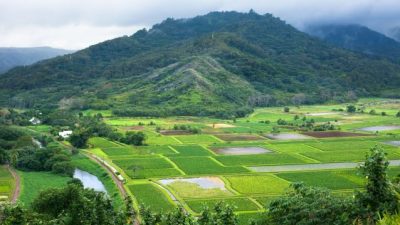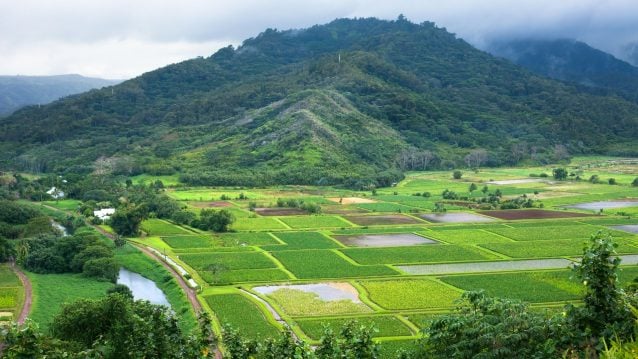It’s Time for Bayer/Monsanto to Leave Hawai’i after Pleading Guilty to Multiple Violations that Harm People and Environment of the State, Advocates Say

All Global Research articles can be read in 51 languages by activating the “Translate Website” drop down menu on the top banner of our home page (Desktop version).
To receive Global Research’s Daily Newsletter (selected articles), click here.
Visit and follow us on Instagram at @crg_globalresearch.
***
Monsanto has pleaded guilty to multiple environmental crimes in Hawaiʻi for the second time in less than four years, and the island communities are left asking “when is enough enough?”
In the most recent case, Monsanto will plead guilty to 30 environmental crimes in Hawaiʻi, related to pesticide use violations and putting field workers at risk. In both cases they admit that they knowingly violated pesticide law and put field workers in harmʻs way. They will pay a $12 million fine this time, bringing their criminal fines and “community service payments” to a total of $22 million since 2019.
At the center of these cases is that the Monsanto field workers had to transport, apply and be exposed to these toxic and banned pesticides as part of their job. In small island communities of Hawaiʻi, Monsanto workers are our friends and family. Folks live just downwind and next door to these fields. We are concerned about their health, and those concerns are glaringly missing from news reports and in the distribution agreements for the community service payments.
There are two separate incidents that have become related because of a deferred prosecution agreement between Monsanto and the courts.
From March 2013 through August 2014, Monsanto stored 160 pounds of Penncap-M hazardous waste at a facility on Molokai. In 2014, they transported Penncap-M to its valley farm on a neighboring island, and “failed to use a proper shipping manifest to identify the hazardous material and failed to obtain a permit to accept hazardous waste at its Valley Farm site.”
Monsanto admitted using Penncap-M on corn seed and research crops at its facility on Maui, knowing that its use was prohibited after 2013 because of a “cancellation order” issued by the EPA, a news release said. Monsanto also admitted that, after the 2014 spraying, it told employees to reenter the sprayed fields seven days later — even though Monsanto knew that workers should have been prohibited from entering the area for 31 days.
Source: Beyond Pesticides
If we center the story around Monsantoʻs workers, and other people who were put in danger, this is what happened: A hazardous pesticide was being stored at a site on Molokaʻi, a small island community, for over a year. It was transported by truck, and airplane or boat without proper documentation, which means that any crash, accident, or spillage could not have been handled properly, putting transportation crews and the environment at risk. On Maui, workers were told to spray a banned pesticide, and then to enter the sprayed fields during the do-not-enter period, exposing and re-exposing themselves to a toxic, banned pesticide.
In the 2019 Penncap-M case, Monsanto pleaded guilty to these offenses, and paid $10 million – a $6 million criminal fine and $4 million in community service payments to Hawaiian government entities. No mention was made of compensation for workers, or funds to assist them with long-term health monitoring and care. The government also agreed to dismiss the felony charges in two years if Monsanto abides by the agreement, which in addition to the fines, included successfully completing a two-year period of compliance with the agreement’s terms, and maintaining a comprehensive environmental compliance program at all of its facilities in Hawaii to ensure compliance with all federal environmental laws.
Monsanto did not maintain compliance.
In 2020, Monsanto instructed workers to use Forfeit 280 on Oahu corn fields. Then, they instructed workers to enter the fields to check for weeds, insects and disease 30 times during a six-day “restricted-entry interval.” A restricted-entry interval is established by EPA based on the acute toxicity of the active ingredients in the pesticide and is meant to limit the exposure of pesticide residues to workers or other persons. In these cases, workers were knowingly sent into treated fields during the periods of time that have been deemed unsafe to humans.
The 2020 Forfeit 280 incidents mean that the company violated the terms of the 2019 deferred prosecution agreement, along with racking up another 30 misdemeanor charges.
Monsanto is now pleading guilty to the second serious charge of knowingly violating pesticide law by using banned pesticides and exposing multiple individuals to pesticide residues at work.
Advocates and leaders in Hawaiʻi are angry.
“Maui will not continue to be predated by this company. People of Kihei are living just downwind of Monsanto, now Bayerʻs, clandestine and apparently often illegal operations. Their open windows are exposed to everything they spray. Itʻs time for the chemical company/seed industry to leave Hawaiʻi. Their mono-crop toxic tech doesnʻt fit with the Hawaiian values of mālama ʻāina (to care for the land). They contribute little to our economy. Big Ag practices are killing our reefs, the real driver of our economy,” says State Representative Tina Wildberger, whose South Maui district contains two large outdoor Monsanto facilities.
In the news releases, court findings and fine distribution details, Monsantoʻs actions are at the center, but the workers are overlooked. Again, if we center the most vulnerable people in the story, it reads differently.
Monsanto didnʻt spray a banned pesticide, putting them in danger of exposure. Workers did.
Monsantoʻs health wasnʻt put in danger by having to enter sprayed fields and be further exposed to a toxic pesticide. Workers did.
Monsanto doesnʻt have to worry for the rest of their life if small symptoms that develop may be a sign of long term health effects due to pesticide exposure. Workers DO.
A plea agreement, filed in U.S. District Court in Honolulu, calls for the company to serve three years of probation and pay $12 million, including a $6 million criminal fine and $6 million in community service payments to four state agencies.
The agencies that each will receive $1.5 million from the additional $6 million in community service payments are the Department of Agriculture, Pesticide Use Revolving Fund — Pesticide Disposal Program/Pesticide Safety Training; the Department of the Attorney General, Criminal Justice/Investigations Division; the Department of Health, Environmental Management Division, to support environmental-health programs; and the Department of Land and Natural Resources, Division of Aquatic Resources.
None of these agencies have been tasked with assisting Monsanto workers with health care costs, exams, or regular checkups as follow up care to pesticide exposure. Residents of Maui are fed up, and looking for recourse. In 2014, Maui voters passed a ballot initiative calling for a moratorium on the production of genetically engineered (GE) crops, until their production and associated pesticide use could be proven safe with studies. Monsanto sued the County of Maui and the ballot initiative was overturned in court. Seven years and $22 million in fines later, we are still forced to share neighborhoods with this company, residents say.
Two Maui residents who live directly downwind from their fields are currently suing Monsanto over birth defects. “Monsanto’s reckless use of pesticides and harmful chemicals near a residential neighborhood have put numerous Maui families at risk,” said Ilana Waxman, partner at Galiher DeRobertis & Waxman, in a news release last week. “Monsanto knew these dangerous substances would drift into nearby communities.”
The movement to evict Monsanto from Maui has birthed a new generation of activists, organic farmers, and elected officials that do put mālama ʻāina at the center of their work, and statewide GE seed production has decreased. According to the U.S. Department of Agriculture, the value of Hawaii’s seed industry was estimated at $106 million for the 2018-19 season. That’s a 13% drop from the previous year – and a 56% decline from 2011, when the industry’s value peaked at $241.6 million. There is still much work to do though, while community members continue to be affected by Monsantoʻs egregious pesticide use.
*
Note to readers: Please click the share buttons above or below. Follow us on Instagram, @crg_globalresearch. Forward this article to your email lists. Crosspost on your blog site, internet forums. etc.
Source: U.S. Attorney’s Office, Press Release
Featured image is from Beyond Pesticides


